How Long Do Dress Alterations Take? Essential Tips for Brides
Have you ever found a perfect dress, but it just didn’t fit quite right? Maybe it was too long, too loose, or needed a little adjusting. But you might be wondering, “How long do dress alterations take?” Don’t worry, that’s where dress alterations come to the rescue! Tailors can make small adjustments to transform your dress into the perfect fit.
If you’ve never been to a tailor before, you might have a lot of questions about how they’ll fix your dress. How much will it cost to tailor a wedding dress or a bridesmaid dress? What should you bring to your fitting? How long will it take to make the changes? When should you visit the tailor to ensure everything is ready in time?
Alterations can seem a little confusing, but don’t worry! We’ll answer all these questions and help you understand what to expect when you visit the tailor to get your dress just right. Whether you’re planning ahead or need same-day alterations for last-minute adjustments, this guide will explain everything you need to know about wedding dress alterations so that you’re fully prepared for your big day.
Why Do People Get Dresses Altered?
Let’s say you bought a new dress, but when you tried it on at home, it felt a little loose around the waist, or maybe the sleeves were too long. Instead of returning it, you can get it altered. It’s like when you buy a pair of shoes, and they come with extra laces, but the shoes are still great. You just need to adjust them so they fit perfectly. The same goes for a dress!
People get dresses altered for all sorts of reasons. Here are a few:
- Special occasions: Brides, bridesmaids, or people going to fancy events often need their dresses to fit just right. They want to look and feel their best!
- Too long or too short: The dress might need to be shortened or lengthened, just like rolling up your sleeves when they’re too long.
- Too tight or too loose: Sometimes, a dress might feel snug, or it could be too big, like wearing a shirt that doesn’t quite fit right.
How Long Do Dress Alterations Take?
The time it takes to alter a dress depends on what needs to be done. Some fixes are quick, like tying your shoelaces, while others take longer, like baking a cake.
Here’s a simple breakdown:
1. Basic Alterations (1-2 weeks)
These are quick fixes, like hemming (making a dress shorter), adjusting straps, or taking in (making the dress a little tighter). Basic alterations are usually done in 1-2 weeks. It’s like fixing a bike tire—fast, but it still needs to be done right!
2. Moderate Alterations (2-4 weeks)
If the dress needs more work, like reshaping the whole dress, adjusting zippers, or adding some fabric, it could take 2-4 weeks. Think of this like building a LEGO set. It takes time, especially if there are lots of pieces to fit together perfectly.
3. Complex Alterations (4-6 weeks or more)
Some dresses, like wedding dresses or gowns, need a lot of work. The tailor might need to add extra fabric, change the design, or even rebuild parts of the dress. These types of alterations can take 4-6 weeks or more. It’s like designing a whole new puzzle with different pieces, so it takes longer to get everything just right.
When to Alter a Wedding Dress: A Simple Timeline

Tailors suggest starting your wedding dress alterations about three months before the big day. This gives enough time for any big changes to the dress and lets you have multiple fittings to make sure everything is perfect.
By starting early, there’s no rush, and your dress can be adjusted little by little. Plus, three months is close enough to your wedding day that your body shape probably won’t change too much, so the dress will still fit just right.
This way, you won’t feel stressed, and there’s enough time to make sure your dress is ready for your special day!
Alterations Timeline
For alterations there is no specific timeline. You’ll have to visit the tailor several times for dress fittings. During each fitting, the tailor will check how the dress fits and make changes based on what you like or don’t like. This way, the dress can be adjusted to fit you perfectly, as if it was made just for you!
After each fitting, the tailor will need about a week or two to make the changes. They’ll then schedule your next fitting so you can try it on again and see how it feels.
Your final fitting should be around two weeks before the wedding. This gives you enough time to make sure everything fits perfectly. If your weight doesn’t change much, you might be able to do it sooner, but it’s always good to have extra time just in case!
How Many Times Should a Wedding Dress Be Altered?
Most brides need about two to four fittings to make sure their dress fits perfectly. Why so many? Well, every dress fits a little differently, and everyone’s body is unique! The first time you try on your dress, your tailor will pin and mark the areas that need adjustments. After this, you’ll have one or two more fittings to make sure those changes look just right. Finally, there’s a last fitting, usually two weeks before your wedding, to ensure everything is perfect.
Here’s a basic timeline for your fittings:
- Initial Fitting: This is where you try on the dress for the first time and the tailor checks what needs to be adjusted.
- Second Fitting: After the first round of changes, you’ll try the dress again to make sure the alterations are working.
- Final Fitting: About two weeks before the wedding, you’ll have a last fitting to ensure your dress fits perfectly.
Each fitting gets you closer to the final look, ensuring your dress feels comfortable and looks flawless on your big day.
What Happens if My Weight Changes Before the Wedding?
Life happens! Sometimes brides lose or gain a little weight before the wedding, and that’s completely normal. The good news is that as long as you have your final fitting about two weeks before the big day, small changes in weight shouldn’t be a problem.
Most tailors can adjust the dress for minor weight changes, but it’s important to communicate with your tailor if you’re concerned. Some brides may even ask if their tailor can make same-day changes if needed. It’s a great option to have, just in case!
Remember: The key to a well-fitting dress is staying calm and working with your tailor. They’ve done this many times before, and they know how to handle adjustments.
Is It Possible to Adjust the Dress After the Final Fitting?
The final fitting is meant to be the last one, but what if you suddenly feel like the dress needs a little more tweaking after that? This depends on your tailor. Some tailors might not have enough time to make last-minute changes, especially if your wedding is just around the corner. However, other tailors—like Montrose Tailors & Bridal—offer same-day wedding dress alterations. This means they can still make adjustments even after the final fitting, but it’s always best to check with your tailor beforehand to avoid any surprises.
If you think you might need some last-minute adjustments, be sure to ask your tailor about their policies during your initial consultation. Having a tailor who offers flexibility can save you from unnecessary stress in the final days leading up to your wedding.
How Much Will It Cost to Alter Wedding Dress?
Wedding dress alterations usually cost between $150 and $600. This means if your dress just needs small changes, like adjusting the length or tightening the straps, it will cost closer to $150. But if your dress needs bigger fixes, like changing the shape of the bodice or adding extra details, it could cost more.
The price depends on how much work the tailor needs to do. Simple adjustments are quicker and cheaper, but custom changes can take more time, which makes them more expensive. It’s important to talk to your tailor about what your dress needs so you know how much to expect!
How Long Do Wedding Dress Alterations Take?
Alterations usually take about 6 to 8 weeks to complete, but this can vary depending on the complexity of your dress. Simple dresses with fewer details might take less time, while intricate dresses with lace, beading, or long trains could take longer.
To avoid any time crunches, it’s a good idea to start your alterations about three months before the wedding. This way, you give your tailor plenty of time to make all the necessary changes without feeling rushed. Always ask your tailor about their specific timeline so you know what to expect.
If you’re planning a quick engagement, don’t panic! Some tailors can offer rush services, but they might charge an extra fee for this.
Choosing the Right Tailor for Your Wedding Dress
Picking the right tailor is just as important as choosing the right dress! You want someone experienced, professional, and skilled in working with bridal gowns. When looking for a tailor, consider the following tips:
- Experience: How long have they been altering wedding dresses? Do they specialize in bridal alterations?
- Reviews: What do other brides say about their services? Good reviews are a great sign!
- Portfolio: Some tailors have before-and-after photos of dresses they’ve worked on. Seeing their previous work can help you decide if they’re the right fit for you.
If possible, schedule a consultation with your potential tailor to discuss your dress and what alterations you may need. This can give you a sense of whether they understand your vision and can bring it to life.
Tips for a Stress-Free Alteration Process
Here are a few tips to make sure your alteration process goes smoothly:
- Start Early: Don’t wait until the last minute to start your alterations. Starting early ensures there’s plenty of time to get your dress perfect.
- Bring Your Wedding Shoes and Undergarments: Your dress needs to fit well with your shoes and any special undergarments you’re wearing, like shapewear or a strapless bra. Bring these to every fitting to get the best results.
- Communicate Clearly: Be upfront with your tailor about any concerns you have. If something doesn’t feel right, speak up!
- Trust Your Tailor: Remember, your tailor is an expert. Trust their advice and suggestions—they want you to look and feel your best, too.
Common Alterations Brides Might Need
Not all wedding dresses need the same alterations, but here are a few common ones that brides often need:
- Hem Adjustments: If your dress is too long or too short, the hem will need to be adjusted so it fits your height perfectly.
- Taking in or Letting Out the Bodice: Sometimes, the bodice (the top part of the dress) needs to be taken in or let out to fit snugly around your chest and waist.
- Strap Adjustments: Straps that are too loose or too tight can be adjusted to fit more comfortably.
- Bustle Creation: For dresses with long trains, a bustle (which gathers and lifts the train) is often added so that you can move easily during the reception.
- Sleeve Adjustments: If your dress has sleeves, they may need to be shortened, lengthened, or altered to fit better.
Conclusion: Making Your Dress Fit for the Big Day
Your wedding dress is one of the most special pieces of clothing you’ll ever wear, so making sure it fits perfectly is important. Alterations are a crucial part of this process, and they ensure that your dress is tailored specifically to your body. By starting early, choosing a skilled tailor, and attending multiple fittings, you can make sure that your dress looks stunning on your big day.
Remember to stay calm, trust the process, and enjoy every step of getting your dress ready. After all, your wedding day is about celebrating love and joy, and a perfect-fitting dress will only add to the magic!
FAQs
How much do wedding dress alterations cost?
Wedding dress alterations can cost anywhere from $100 to $1,000, depending on the complexity of the alterations and the tailor’s rates. Simple changes like hemming are less expensive, while intricate adjustments, like adjusting the bodice or adding a bustle, will cost more.
Can any dress be altered?
Most dresses can be altered, but some fabrics or designs might be more challenging. It’s important to choose a tailor experienced in bridal alterations and discuss what’s possible for your specific dress.
How long before my wedding should I start alterations?
It’s best to start alterations about three months before your wedding. This gives your tailor enough time to make all necessary changes without rushing.
What should I bring to my fittings?
Bring your wedding shoes, any special undergarments you’ll be wearing, and accessories like veils or belts. These will help ensure your dress fits perfectly with everything else.
What if I need last-minute alterations?
Some tailors, like Montrose Tailors, offer same-day alterations for last-minute fixes. It’s always good to check with your tailor ahead of time to see if this option is available.


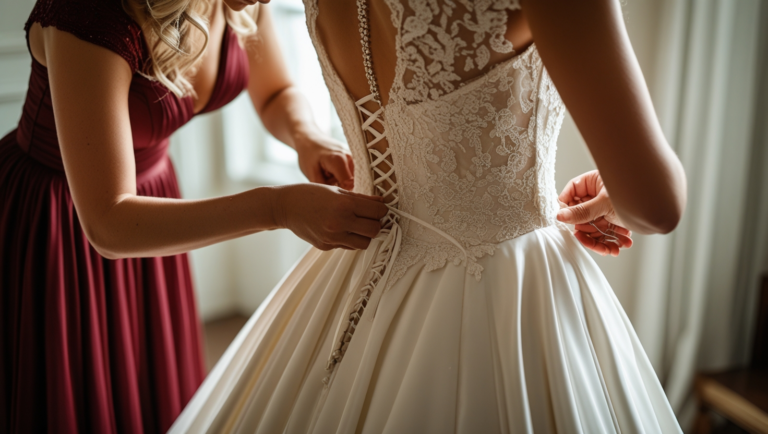
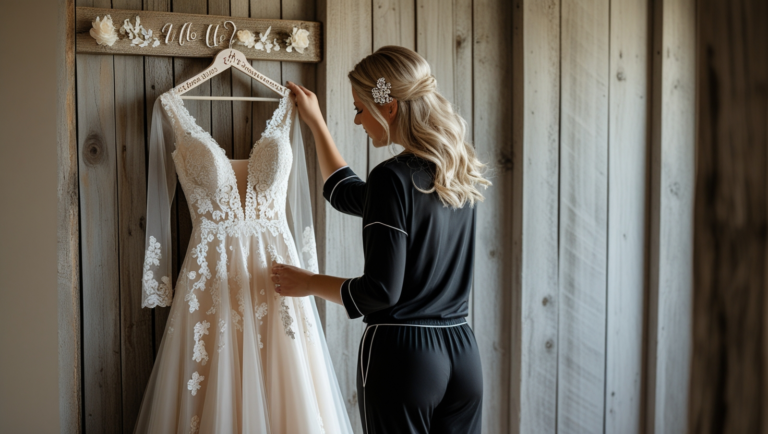

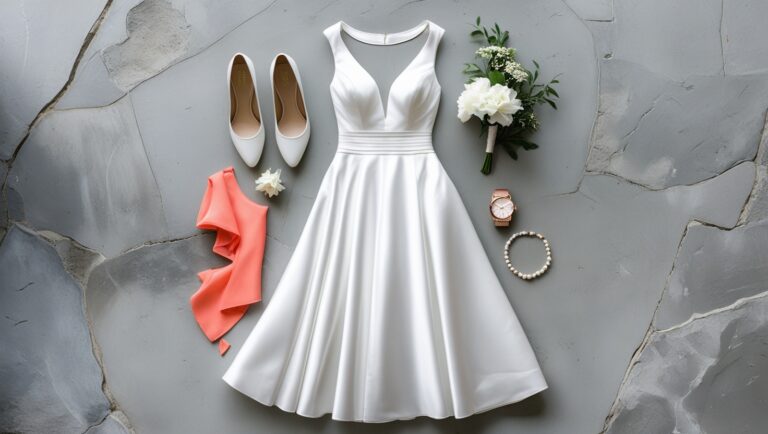
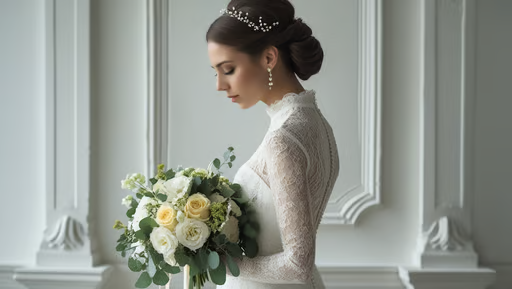
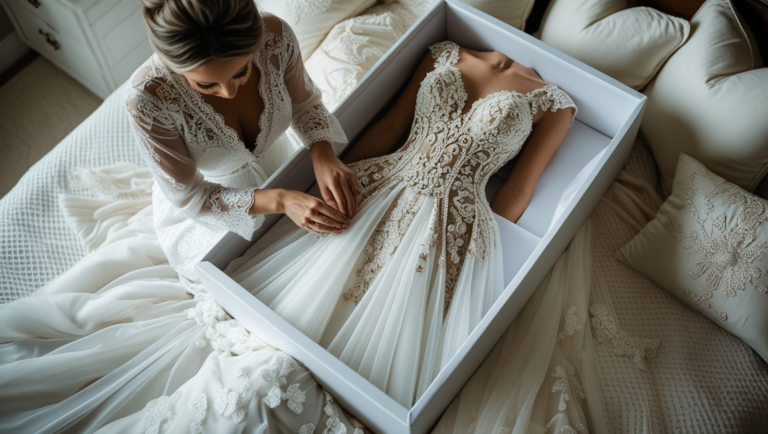
One Comment